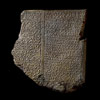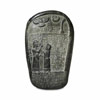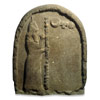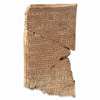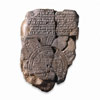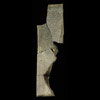
Translation of artifacts provided courtesy
of:
The British Museum 2003
MORE ARTICLES: VIDEO - THE FLOOD TABLET (real player format) Sumerian Culture and the Anunnaki |
Neo-Assyrian, 7th century BC The most famous cuneiform tablet from
Mesopotamia
The Assyrian King Ashurbanipal (reigned 669-631
BC) collected a library of thousands of cuneiform tablets in his palace
at Nineveh. They recorded myths, legends and scientific information. Among
them was the story of the adventures of Gilgamesh, a legendary ruler of
Uruk, and his search for immortality. The Epic of Gilgamesh is a huge
work, the longest literary work in Akkadian (the language of Babylonia
and Assyria). It was widely known, with versions also found at Hattusas,
capital of the Hittites, and Megiddo in the Levant.
This, the eleventh tablet of the epic,
describes the meeting of Gilgamesh with Utnapishtim. Like Noah in the
Hebrew Bible, Utnapishtim had been forewarned of a plan by the gods to
send a great flood. He built a boat and loaded it with everything he could
find. Utnapishtim survived the flood for six days while mankind was destroyed,
before landing on a mountain called Nimush. He released a dove and a swallow
but they did not find dry land to rest on, and returned. Finally a raven
that he released did not return, showing that the waters must have receded.
This Assyrian version of the Old Testament
flood story was identified in 1872 by George Smith, an assistant in The
British Museum. On reading the text he
... jumped up and rushed about the room
in a great state of excitement, and, to the astonishment of those present,
began to undress himself.'
Length: 15.24 cm Excavated by A.H. Layard
S. Dalley, Myths from Mesopotamia: Creation,
The Flood, Gilgamesh and others (Oxford University Press, 1991)
T.C. Mitchell, The Bible in the British
Museum: interpreting the evidence (London, The British Museum Press,
1988), p. 70, no. 33
H. McCall, Mesopotamian myths (London,
The British Museum Press, 1990), pp. 38-52
From Nineveh, northern Iraq
Width: 13.33 cm
Thickness: 3.17 cm
